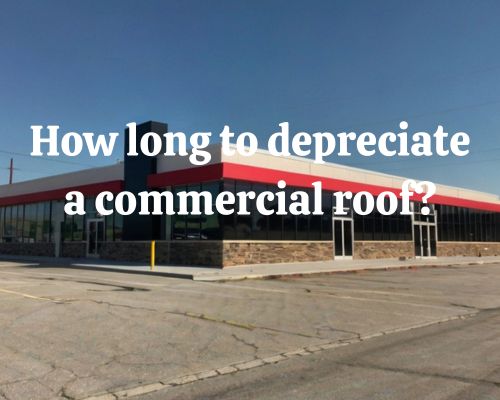
How Long to Depreciate a Commercial Roof?
Essential Guidelines Explained
Depreciating a commercial roof can span up to 39 years, aligning with the IRS guidelines for commercial property. This extensive period often means that a roof may need replacement before you’ve finished depreciating its cost.

Adopting the Section 179 deduction can alleviate some of the long-term depreciation burden. This allows for expensing the entire cost of the roof in the first year, rather than spreading it over nearly four decades.
Adjusting to these rules can potentially offer substantial financial relief and more immediate tax benefits.
Charles Jimerson from CJ Commercial Roofing NJ has to say that familiarize yourself with the intricacies of roof depreciation. Whether you’re capitalizing on Section 179 or following traditional depreciation methods, knowing how these regulations impact your business’s finances is essential.
Such knowledge not only optimizes tax savings but also enhances long-term property management strategies.
Understanding Depreciation of Commercial Roofs
Depreciating a commercial roof involves understanding how long the asset will provide economic benefits to your business and leveraging tax deductions. Here, we explore the fundamentals, lifespan determination, and tax implications.
Fundamentals of Depreciation
Depreciation spreads the cost of a commercial roof over its useful life. For nonresidential real property, the IRS typically stipulates a 39-year recovery period. This means you will deduct an equal portion of the cost each year.
Formula: Annual Depreciation = Cost of Roof / 39
For example, a $900,000 roof would result in an annual depreciation deduction of approximately $23,077, easing the expense burden over time.
Determining the Lifespan of Your Commercial Roof
Several factors influence the lifespan of a commercial roof, including materials used, climate conditions, and maintenance practices. High-quality materials like metal or TPO (thermoplastic olefin) can extend the roof’s useful life.
Regular inspections and timely repairs also play a critical role. A well-maintained commercial roof typically lasts between 20 to 40 years, making the IRS’s 39-year period a reasonable estimate for tax purposes.
Commercial Roofing and Tax Deductions
The IRS allows business owners to deduct expenses related to the depreciation of nonresidential real property, including roofs. Under Section 179 of the IRS tax code, you may also opt to expense a portion of the roof’s cost in the year it’s placed in service.
For example, if your business spent $900,000 on a new roof, you could take a Section 179 deduction in addition to regular depreciation. This provides significant short-term tax relief by reducing your taxable income more immediately than standard depreciation alone.
Tax Provisions and Deduction Opportunities
Navigating tax provisions can significantly influence your financial planning when it comes to depreciating a commercial roof. Several opportunities for deductions exist, including Section 179 and Bonus Depreciation, which can offer immediate or accelerated benefits.
Navigating Section 179 Deductions
Section 179 enables you to deduct the cost of qualifying property, including commercial roofs, up to a specific limit for the taxable year. The maximum deduction under Section 179 is currently $1,160,000. This limit reduces dollar-for-dollar once expenditures go beyond $2,890,000.
You can immediately expense investments such as non-residential property repairs or maintenance, rather than spreading the deduction over several years. This provision encourages capital improvement by reducing taxable income swiftly.
Leveraging Bonus Depreciation
Bonus Depreciation allows you to deduct a significant percentage of the cost of qualifying property in the year it is placed in service. Unlike Section 179, there is no annual limit on the amount you can expense under Bonus Depreciation.
This provision is beneficial for large investments, such as extensive roof repairs or replacements. It allows you to deduct 100% of the cost for qualified improvement property. This can result in substantial tax savings and immediate financial relief for business owners.
Consulting Tax Professionals for Optimal Benefits
“Consulting a tax professional can optimize your benefits from these deductions. They can help navigate the Internal Revenue Service (IRS) guidelines.” said Charles Jimerson from CJ Commercial Roofing NJ.
They will ensure that your deductions comply with the Tax Cuts and Jobs Act and other relevant regulations.
A tax expert can pinpoint opportunities specific to your situation. They can also identify what constitutes a betterment, repair, or maintenance under current IRS rules.
Leveraging their expertise ensures that you capture all available deductions and avoid costly errors.
Ensure that you consult a tax advisor before making substantial investments in commercial roofing. This can maximize your tax credits and deductions for the year.